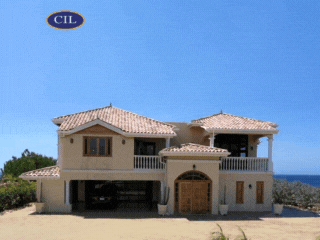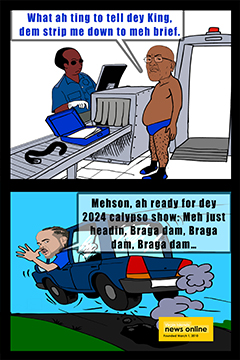VI building codes to be reviewed following Hurricane Irma
Speaking during a live radio Town Hall Meeting on ZBVI 780AM on September 25, 2017 Premier and Minister of Finance, Dr The Honourable D. Orlando Smith, OBE said, “This hurricane that hit us is the scale we have never seen before, it was a Category 5, and it was really devastating. Interestingly just before that, we had intense flooding, again, such as we never had before in the BVI. Times have changed, and global warming is definitely affecting us and we now have to look at where we are as a country and make the adjustments to suit the times in which we live.”
The Territory’s leader stated in a press release that “We have to take lessons from what has happened, certainly with Irma and review our building codes. We have lost and received damage to about 70 percent of our buildings, and that now gives us an opportunity to build smarter and stronger.”
The Premier said just a few months ago, he received a copy of the first draft of the new building code because he had some concerns about the way buildings were being constructed. He added, “But now we have to review that again, and when we do that, we will want to involve the community and get your contributions so that in the end, we will be able to build stronger and better.”
Take Global Warming into consideration- Marlon A. Penn
Also speaking in support of the building code review, Junior Minister for Trade, Investment Promotion and Consumer Affairs, Honourable Marlon A. Penn (R8) said, “We have an opportunity to rebuild and to do new things and rebuild green. Our rebuilding efforts have to take into effect the impact of global warming, as we have seen the impact of global warming first-hand.”
Sharing similar sentiments was the Junior Minister for Tourism, Honourable Archibald C. Christian (AL) who said that the Category 5 hurricanes seem to be the new norm, but the Territory now needs to build to withstand a Category 5 plus.
He added, “We need to build stronger and better, and it will take the efforts of professionals to assist us. We have a number of engineers here in the Territory, as well as those from the region and internationally but it can’t be business as usual anymore when it comes to building. We need to be building bunkers now that can withstand a Category 5 hurricane and above.”
Premier Smith and other members of Government appeared on a live radio Town Hall Meeting on Monday September 25, 2017 where as they provided an update on the Government’s rebuilding process, and addressed concerns from the community. The public is invited to continue to email their questions to rebuildbvi@gmail.comand they will be answered during the next scheduled radio town hall meeting.










.png)




.png)



.png)






















6 Responses to “VI building codes to be reviewed following Hurricane Irma”
Further, the code must also prescribe how galvanize, shingles, tiles (clay, concrete).....etc are attached to the sheathing and either rafters or trusses. The roofing system must have the strength to resist high winds and uplifting force. Winds flowing over the surface of a roof creates a negative pressure/uplifting force above the roof, along with a positive force/pressure below that pushes up on the roof. The behavior of wind flowing over a roof is similar to air flowing over the wing of an airline.
Another focus that must be prescribed is the strength of walls, and openings in walls (windows, doors, garage doors). The walls and wall openings must have the strength to resist the design wind load. Moreover, the code must also prescribe a continuous load path, i.e., the roof system must be connected to the walls and walls must be connected to the foundation. A broken load path will contribute to building damages, including roof uplift. Additionally, the code must also provide options for covering wall openings, i.e., plywood, shutters.......etc.
Moreover, the focus should not be only wind resistance but also on damages and threats from storm surges. No doubt global warming/climate change is contributing to sea level rise, e.g., Kiribati (formerly Gilbert Islands) in the Pacific. A further area of concern is flooding resulting from poor drainage design, blocking drainage channels, rain events larger that the capacity of drainage system and poorly maintain drainage channels, e.g., a system designed to convey the flow from a 25-year rain event may flood with a 100-year rain event.
Clearly, most residents may not be able to afford to construct a building to resist the high winds from a Cat 4 or 5 hurricane. Consequently, buildings designed to resist Cat 3 hurricane may received significant damages from Cat 4 and 5. In the VI most residents use their homes as rideout shelters. As such, residents should consider building a safe room within their homes, a safe room is a room constructed to offer a higher level of protection than the rest of the building. Government needs to consider constructing Cat 5 ride out domes in each districts.